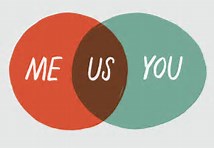Meeting rooms – the centre stage where all the action starts, are not living up to the name these days. Apart from being a time consuming activity, the idea of meeting in itself has attracted some stigma. Why so?
Because what happens in a meeting generally gets left behind. Ideas getting discussed and not getting retained later or worse, not acted upon later makes the participants disillusioned.
Today’s work is interwoven, dynamic and constantly evolving. Collaboration is not an efficiency or productivity factor. It is a necessity. Meetings are the simplest way to collaborate. However, they can very surreptitiously become a standard activity without purpose.
People getting together for a formal huddle and then breaking up after the meeting for smaller informal huddles is a common scene. What is missing between meetings and post-meeting impact that is rendering the most collaboration tool non-productive these days? Here are the three primary reasons:
- One Way Communication – Meetings are great for brainstorming. And unlike the “non-productive” & ETA-oriented meetings, they were supposed to be continuous. However, they got reduced to a broadcast session with communication happening from top to front-end. In today’s dynamic business scenario, the broadcast model is redundant and demotivating to the employees. Their ideas are rendered worthless when there is no open-minded agenda.
- Minutes Of Meeting Lost In Emails – With so much pressure on making each minute count, the employees are forced to get creative and ideate in the meetings. To capture these ideas, a “minutes of meeting” email is circulated to help everyone stay on the same page. However, this so-important mail can stay forgotten in the inbox and be even lost eventually amidst the multiple MoM mails. You can imagine how difficult it can be to track the actionables from there.
- Not Capturing Ideas – For every event, there is a preceding event called planning. Time and effort constraints make it impossible to plan properly for every meeting. Although meetings are planned on the go, ideas for these meetings fail to get captured on the go. Preparation for such meetings is grossly ignored.
Meetings are productive when involvement of all the employees can be facilitated, with or without their presence. What gets discussed and brainstormed can be taken out and pinned to a board for everyone’s eyes. To change the notorious beliefs associated with meetings, meetings need to be the starting point of discussion. Not the whole thing.
Imagine your employees shuttling from meeting to meeting in the midst of deadlines, assignments and responsibilities. It is natural for them to get zoned out in the meeting which causes substantial loss of time. Or if an employee falls sick, he or she can hardly catch up with the discussion at his own pace later on and join everyone else on the same page.
That is a preventable loss, if a system to capture ideas on-the-fly is in place. It might reduce or completely change the way meetings affect the bottomline. Here are some ways:
- All the decisions from the meeting can be stored in a central repository for everyone’s eyes.
- The actionables decided in the meeting can be stored centrally. And these can be tracked by all the stakeholders.
- Conversations can happen around those actionables, bringing new issues as well as solutions to notice.
- These conversations & status of the actionables can set the tone for further meetings, giving them more meaning and purpose.
- The conversations can be hashtagged so that they can be searched and linked back to specific meetings.
We would love to hear more about your thoughts, opinions and disagreements. Do you agree that we could improve the output from meetings using collaboration tools?



